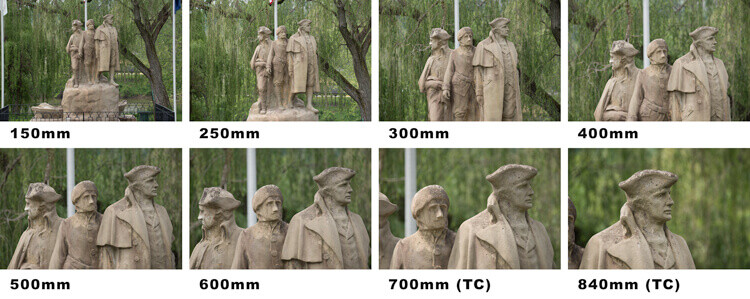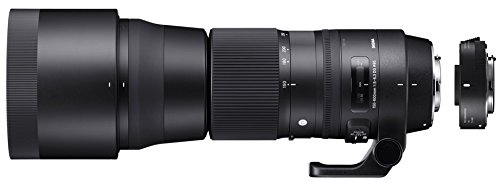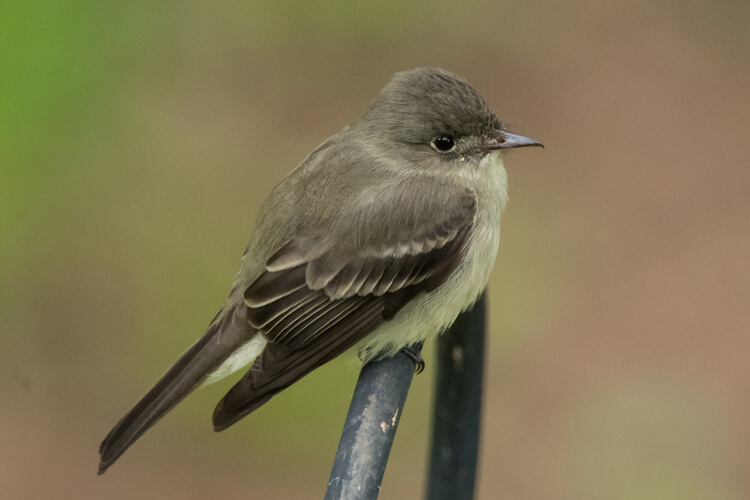Tuesday 31 May 2016
Opinion: A Disturbing Trend in Photography
I’m old. Believe me, I know it. I’ll be 70 in a few months. That fact may make it hard for you to take me seriously, but bear with me for just this post. With age comes wisdom, right? What I want to write here is that I think the field of photography by those making art is changing in a disturbing way. Read on.
Photographic series or bodies of work are being explicated, explained, contextualized, rationalized, and elevated with text or verbal rationals. You’re thinking: so what? That’s no big deal. Let me start with a short history and then let’s take a look at current practice.
20 or 30 years ago, going to a photo show at MOMA or the Met, SF Modern, ID in Chicago, or even the Whitney often meant you were confronted with a row of framed and matted photographs along with perhaps a brief statement from the show’s curator that gave some biographical data on the photographer or maybe explained in what context the works were being shown. The titles of the work were usually the place and the year the images were made.That was it. The expectation was that the photographs stood on their own, were to be viewed and understood on their own terms, usually as single images sitting next to other single images—think Robert Frank, Lee Friedlander, Harry Callahan, Frederick Sommer, Lew Baltz, even Ansel Adams and Cartier Bresson. Few words were necessary. There were exceptions, of course. For instance, Robert Adams, who had whole reams of text used to flush out his work and build a rational.
Now, go to a show by a recent MFA grad or sit across the table from someone showing you their work at a portfolio review and things are very different. For most work there is absolutely no understanding possible without a written or verbal account of what the photographer is up to. I always have the sense that I am joining the telling of a story in the middle, trying to play catchup. For most works, separate the photographs from the words and you have no ability to comprehend what is going on.
This isn’t always awful, as perhaps it is part of the evolution of the medium into a specialized category that leads to increased specificity and a clearer intent. But, and this is my main point: the photographs often aren’t very good. It’s as though photography has been sublimated to a necessary part of the total, that the words are the priority and the photographs somehow are ancillary or secondary and therefore not needing much attention.
This resides perilously close to using the photographs as illustrations, really another field entirely.
What is this? My theory: most new art photography these days come from MFA grads who have studied the medium, not only its practice (although often not enough) but its theory, its criticism, its analysis. As the medium’s craft has become easier, more fluid and automatic, mastery of the technical and visual has become less important.
Students flowing out of MFA programs now that were started in the 60’s and 70’s are graduating with degrees and thesis works that are equivalent to PHD dissertations (there is no PHD in applied photography) as the MFA is the terminal degree in the discipline. These grads and recent grads are learned, academic, studied, vocal, theoretical, and informed in the medium’s history. They are also “conceptual” in that the thought is formed, the work is made to fit the thesis, and then executed as a package with the written text to go along with it. This can resolve itself in performative works, video and/or photographs with a primary written component and a secondary tier of importance to the photography.
As photography at this level has grown, the treatment of it as an academic pursuit has as well. Very often the craft of the medium is subsumed, indicating the artist has little interest in the inherent qualities of the discipline itself, using it simply as a vehicle for visual communication. In fact he or she may have graduated from just that: a department of visual communication.
This constitutes a “literalization” of the medium or in effect a deconstruction of its inherently visual qualities resulting in an analytical and intellectual final result.
Go to a graduate thesis show and take a look. The students are concerned with issues of identity, gender, developmental and emotional positioning, posturing, physical and emotional abuse, cultural and societal pressure and assumption, human rights, sexual identity, and on and on. Each of these ideas and many others takes on a personal relevance and importance square in the photographer’s aim, as though there is a catharsis that when shared it is assumed to have relevance to others who are there looking at the work. Of course, much of this is narcissism, self-absorption, even making work with blinders on.
Before you label me an old guy with a lack of sympathy for the young and an inability to see the value in younger’s peoples ideas, read on. Joni Mitchell once sung that “the old hate the young” but I have always really liked the young; take my forty years of teaching at the university level that I really enjoyed as a case in point. Youth is vibrancy, endless energy, huge flexibly, and a sense of discovery that is wonderful to be around. But making the assumption that I or any viewer wants to hear the personal story as a prominent component of the art just really gets me going. I do not. I want to be able to look at the art and judge it on its own merits. Presently, I find a good deal of it lacking.
Look, the practice of making pictures used to be hugely craft based. You needed to study photography and the making of pictures hard to be good at it. It used to be difficult to do well. As a professor I seldom saw any student any good at it until they were a couple of years in. Now, the level is higher and proficiency comes without much work. I doubt most students two years into their degree can accurately tell you what ISO is, aperture and shutter speed settings, 18% gray, reciprocity failure, D-Max and so on. You can build the case, of course, that they don’t need to know those things. Put the camera on “P” and fire away.
My point? As photography becomes ubiquitous, as we are all photographers and even the most simple of cameras made today provides stunning results compared to a few years ago, photography is free to explore areas never approached before. That’s all good. But please give me less words and better pictures! I find the story, the text, mostly boring and condescending, telling me how to look at the photographs rather then letting the photographs do the talking.
It’s ironic that as photographs have become easier to make and there are more photographers than ever before making more photographs the pictures are worse.
As Kurt Vonnegut wrote in Slaughterhouse Five when referring to the allies massive bombing campaign of the city of Dresden towards the end of WWII that killed people in the hundreds of thousands:
So it goes.
About the author: Neal Rantoul is a career artist and educator. After 10 years teaching at Harvard and 30 years as head of the Photo Program at Northeastern University in Boston, he retired from teaching in 2012. You can find out more about him or see his photographic work by visiting his website. This article was also published here.
from PetaPixel http://petapixel.com/2016/05/31/opinion-disturbing-trend-photography/
The Not-So-Obvious Reason for Using HDR
Get Viktor’s Rapid Editing for HDR eBook, Course & Presets Bundle at 60% off now over at Snapndeals, only until June 7th (AUS time).
Over the past five years or so, HDR (high dynamic range) has become a huge part of my photography.
Even with the latest advances in camera sensor technology, the dynamic range of the human eye is much wider than any modern camera sensor, and as a result, can only partly interpret the human experience. The goal of HDR photography is to artificially increase the dynamic range of a given photograph, making it as close as possible to the human experience.
I do not consider HDR to be a photography style, but rather, a technology that helps us to extend our creative reach and overcome the limitations of modern photo equipment, specifically a camera’s sensor.
When the dynamic range of the scene we capture exceeds the dynamic range of the camera’s sensor, it results in the loss of information (or details) in both the highlight and shadow areas. HDR technology allows us to separately capture these details from the darker and brighter areas of the scene, and merge that information during the editing process.
Even though every generation of modern camera offers a larger and larger dynamic range that gets even closer to the human experience, HDR technology continues to be an extremely valuable tool to have in your toolkit.
But, those who read my blog and follow me on social media often give me a hard time when I post an HDR processed image with a dynamic range that is not extreme. As a result, I get blamed for using HDR for no reason and am accused of intentionally complicating the editing process.
In this article, I will demonstrate exactly why and how I use HDR when the lighting of a scene is not too extreme.
I took the featured photo in the Eastern Sierra during my driving trip to the Southwest.
Covered by the clouds, the sun diffused the light and made it less dynamic. I could see right away that I did not need HDR processing to capture and preserve the entire light range. However, I took three bracketed shots anyway just to make sure I collected as much information from the scene as possible.
When I started editing the photo in Lightroom, I only used a single RAW image (middle bracket). The challenge was to overcome the mild haze in the air, so I had to apply pretty aggressive edits in Lightroom (contrast, clarity and vibrance) to bring back the contrast and colors of the scene.
Once I was happy with the result, I evaluated the image by zooming in to 100% (1:1 in Lightroom), in order to see what noise reduction setting to use. When I did this, I realized that the image started to break up because of my aggressive editing. The deterioration in the image was beyond digital noise and was almost impossible to fix even using the dedicated noise reduction tool.
This is when HDR came to the rescue. I selected three bracketed shots and merged them to HDR using the HDR Merge module of Lightroom.
After Lightroom produced a brand new HDR image in DNG format, I used the Sync functionality of the program to apply the editing setting of the original RAW file, to the new HDR image.
The effect of the edits were identical to the original RAW file, but the image was much cleaner without any traces of deterioration. The newly created HDR file had much more information and details, which allowed me to push it much harder without producing negative artifacts.
The image is cropped 100% without any noise reduction added.
The digital noise of the image was mild and was completely eliminated using the noise reduction plugin.
Conclusion
By merging multiple images to HDR, it not only helps us overcome the dynamic range limitations of modern photo equipment, but can also to produce images that have more digital information and details, compared to individual out-of-camera RAW files.
Get Viktor’s Rapid Editing for HDR eBook, Course & Presets Bundle at 60% off now over at Snapndeals, only until June 7th (AUS time).
The post The Not-So-Obvious Reason for Using HDR by Viktor Elizarov appeared first on Digital Photography School.
from Digital Photography School http://digital-photography-school.com/the-not-so-obvious-reason-for-using-hdr/
Pop Star Adele Shames Fan for Setting Up a Tripod at Her Concert
Many of of us have done it: rather than enjoying that amazing concert or live event you’re at, you pull out your camera and end up watching most of it through the LCD screen. Well, pop star Adele ain’t havin’ it, especially if you go so far as to set up a tripod.
The singer-songwriter is making headlines today after she was recorded (*insert irony here*) telling off a woman in the crowd at this weekend’s show in Verona, Italy. “Can you stop filming me with a video camera, because I’m really here in real life,” she says. “You can enjoy it in real life, rather than through your camera.”
You can see the full moment (twice) in the video below:
Obviously there were a lot of cameras out filming/photographing the show and this interchange, but it seems the thing that upset the pop star wasn’t so much that someone was filming her, it was that the woman in question had supposedly set up a tripod in the front row of the show.
“Can you take your tripod down?” you hear Adele say towards the end of the video, visibly upset. “This isn’t a DVD. This is a real show.”
Both comments were met with cheers from the crowd, but while most people seem to be on the pop star’s side, a few responses like this (and harsher) did crop up online:
another side thinks you shouldn't set up a damn tri-pod at someones gig. There's definitely a difference between that & iPhone footage.
— Chai Cameron (@MyNamesChai) May 31, 2016
just saw the thing about adele telling a fan to stop recording her show… the woman needs to get a grip.
— Seapeekay (@Seapeekay) May 31, 2016
Of course, this isn’t the first (and won’t be the last) time a musician has called out a fan publicly for taking pictures or recording video. Beyonce once told a fan to “put that damn camera down” and Ryan Adams yelled at a fan for using flash and triggering a serious medical reaction.
In the end, unless you’re shooting the show professionally, it may be safer to just leave the camera in your bag… and DEFINITELY don’t set up a tripod. Public shaming is no fun.
(via Daily Mail)
Image credits: Adele Live 2016 Tour by Egghead06.
from PetaPixel http://petapixel.com/2016/05/31/pop-star-adele-calls-fan-setting-tripod-concert/
The Most Detailed Photo of Pluto You’ll See ‘for a Very Long Time’
10 months after its historic Pluto fly-by, the New Horizons spacecraft has finally finished sending back “the most detailed photos of Pluto’s terrain you’ll see for a very long time,” according to NASA.
The strip mosaic is made up of close-up, black-and-white shots of the dwarf planet’s surface that covers the whole hemisphere New Horizons saw as it flew by in July—from a rugged mountain range through a stretch of bright, nitrogen ice plains. The final mosaic includes all of the highest-resolution images taken by New Horizons.
You can see the full image here, or click play on the video below to get a tour of the whole thing from top to bottom:
The final mosaic boasts a resolution of about 260 feet per pixel, with each image captured by the spacecraft’s Long Range Reconnaissance Imager (LORRI) camera from a distance of about 9,850 miles (15,850 kilometers) from Pluto.
To learn more about this image and what it took to capture it, click here.
(via Engadget)
Image credits: Photos courtesy of NASA/JHUAPL/SwRI.
from PetaPixel http://petapixel.com/2016/05/31/detailed-photo-plutos-surface-youll-see-long-time/
Nikon May Be Working On a ‘Large Sensor’ Mirrorless Camera: Report
Nikon may be planning to get serious about mirrorless cameras, and soon. Online ‘chatter’ about the camera is beginning to increase, and Nikon officially registered a new digital camera in Indonesia just yesterday.
The report comes from Nikon Rumors, who can’t say for certain whether the camera will be announced at Photokina or not. According to previous rumors, the mirrorless camera will have a “large sensor” and could potentially sport an F-mount.
What we do know is that Nikon just registered a new digital camera with the Indonesian communications agency, the “N1514.” According to Mirrorless Rumors, this sort of registration comes just a couple of months before we officially hear about the camera:
It’s been years since Sony released the first a7 full-frame mirrorless system, and given the hype around those cameras, it wouldn’t surprise us if Nikon jumped into the FF mirrorless game. Then again, “large sensor” could also mean APS-C, given Nikon’s current mirrorless lineup.
Whatever the case, more details should begin to leak soon if the camera is due out in just a few months’ time.
Image credits: Nikon 1 J5 by Henry Söderlund.
from PetaPixel http://petapixel.com/2016/05/31/nikon-may-prepping-large-sensor-mirrorless-camera-report/
Review of the Sigma 150-600mm Contemporary Lens Plus TC-1401 Teleconverter Bundle
One of my favorite subjects to photograph is wildlife, so when asked to review the Sigma 150-600mm lens, I was excited about the opportunity to see how its results compared to my Tamron 150-600mm.
In addition, Sigma recently began offering a bundle for their 150-600mm with a 1.4x teleconverter. Since I shoot mainly with a Nikon D750 full frame, the lens bundled with a 1.4x TC interested me very much. The 1.4x TC makes the 600mm, an 840mm on a full frame camera, so in theory this allows my full frame camera to shoot wildlife with nearly the same zoom factor as a crop sensor. (Nikon crop sensors are 1.5 and Canon, 1.6)
There are two things to consider when looking at a new lens:
- First is its ease of use
- Second is the quality of its optics.
In this article I’ll be applying both of these considerations as I review Sigma’s new bundle, and make comparisons between the Sigma and Tamron lenses. All images in this article were captured with the Sigma 150-600mm with the 1.4x TC.
Focusing
The Tamron features a larger, thicker focusing ring than the Sigma, which makes it easier to manually focus the lens. As for the Sigma, it has an extra setting on the autofocus switch for manual override (MO) which combines autofocus with an option to manually focus. I did not notice any major difference in the focusing responsiveness between the two lenses. Both did a fair job when grabbing focus, though neither lens is going to focus as quickly as a much more costly 600mm prime lens. The minimum focusing distance on the Tamron is just slightly less than the Sigma – not a game changer, but nevertheless a plus for the Tamron.
Focus Limiter switch
While both lenses have a focus limiter switch, with settings between Full and 10m (Sigma) or 15m (Tamron) to infinity, the Sigma features a third option on the limiter switch for 10m to 2.8m. In my testing, this third option proved very useful and was easy to locate and use, in order to focus on closer objects much quicker.
Customization
A feature the Sigma lens offers that the Tamron does not is an extra customization switch, which provides for an optional USB docking station (purchased separately). This allows a photographer to create two customized setting for OS (Optical Stabilization), AF, and focus-distance limits, and can also be used to download firmware updates directly to the lens.
Zoom Lock
Both the Tamron and the Sigma have a locking switch to prevent zoom creep at 150mm. However, the Sigma can also lock at several other focal settings, and what is even better, a quick twist of the zoom ring will unlock the it, without having to fumble around to find the switch. (In some cases this might be the difference between capturing and missing a killer shot!)
I found that my Tamron lens crept more than the Sigma, but this could be caused by the fact that it is an older lens with more use. Still, the lock switch on the Sigma is a great feature, especially since one can “soft lock” at many focal lengths.
Image Stabilization
Both lenses have their own image stabilization systems: Tamron’s VC (Vibration Compensation) and Sigma’s OS (Optical Stabilization). The Tamron has a simple on and off for the VC, while the Sigma has two settings: #1 is the standard setting for normal lens movement, and setting #2 is used for hand-held panning on a vertical plane, which will correct for up and down movement in subjects, such as birds in flight.
Zoom Ring
The zoom ring on the Sigma turns counter clock-wise, which is no big deal for Canon shooters. But for Nikon users, this is opposite from the normal zoom rotation on most Nikon lenses. It’s not a big deal, but does take some getting used to.
Tripod Collar
Both lens come standard with a tripod collar, but the foot on the Sigma collar is much smaller than the Tamron’s. This is only a minor problem, but I found a solution for it. I added a 5 inch quick release plate to the foot, which makes a great handle to carry the Sigma lens, as well as a plate to connect to a tripod.
Image Quality
Here is where the comparison gets tougher, as both lenses are much sharper at the shorter focal lengths, and both are softer at the longer focal lengths. Both are sharper when stopped down to f/8 or f/9, than wide open. In my opinion, the difference in image quality between the two is negligible. There is no clear winner here, both having areas where they are slightly better than the other.
The addition of the 1.4x TC to the Sigma when stopped down, doesn’t seem to affect the image quality. The Sigma seems to have a clear advantage when it comes to chromatic aberration (CA), and even using the 1.4x TC there was noticeably less fringing in high contrast areas, when compared to the Tamron. Of course, CA is very easily corrected in Camera RAW or Lightroom when shooting in RAW.
Warranty
The advantage for warranty goes to Tamron, which offers a 6 year one, compared to 4 years with the Sigma. Still, in my opinion, both lenses are well constructed, and I am not convinced how much of an advantage that is, as most warranty issues show up early on.
1.4x Teleconverter
Adding the bundle of the 1.4x TC, and the 150-600mm Sigma can get your full frame camera back in the field when it comes to wildlife photography. While adding the teleconverter seems to slow the autofocus a bit, I shot with this bundle on both my crop sensor and full frame sensor cameras, and I believe the autofocus was more responsive on the full frame.
NOTE: Before purchasing the 1.4x TC, make sure the camera will autofocus at f/8. Many entry model DSLRs will not autofocus above f/5.6, so while this bundle may fit those cameras, manual focus will be necessary. Other models may only autofocus on the center focus point, and still others may have a limited number of focus points with the 1.4x TC.
Adding the 1.4x TC did seem to give a softer image when the lens was extended to 600mm (840mm), but if you stop down to f/10 to f/11 the images are nearly as sharp as at 600mm without the TC. Of course, stopping down means either using a slower shutter speed or a higher ISO, which may add some blur or noise to an image. I did find that the OS on the Sigma did a nice job of reducing camera shake, when hand holding at slower shutter speeds.

The above images show the range and extra reach of the Sigma 150-600mm with the last two images having the 1.4x TC added for an extra 240mm of reach.
Tips
The rule of thumb when shooting with long focal lengths is to set the shutter speed equal to, or greater than the focal length, so remember that when by adding the 1.4x TC to a 600mm, one is now shooting at 840mm on a full frame, and 1260 mm on a crop sensor. For sharp images, a shutter speed over 1/1000th of a second is a must.
When carrying your camera with a large lens such as these 150-600mm lenses, it’s best to hold them by the lens rather than your camera. These lenses weigh much more than your camera and can put a lot of stress on the lens mount if carried by the camera. Likewise, when mounting on a tripod, always use the tripod collar to reduce stress on your camera’s lens mount (it is better balanced using the collar and won’t be front heavy).
Conclusion
Both the Tamron and Sigma lenses are well designed, and for the price range are great equipment investments. As mentioned earlier, I feel the image quality compared very closely. The Sigma does offer some useful extra features, out-weighing the issues of the smaller focusing ring and the counter-clockwise turning of the zoom ring for a Nikon shooter.
If you currently have a Tamron it may not be worth making a switch. But with the addition of the 1.4x TC, the Sigma bundle offers a great setup for full frame cameras, as well as crop sensors for some extra reach. So if you are looking for some extra reach (and we all are) the addition of the 1.4 TC to the Sigma may be a game changer. It was for me!
As a result of my review of the Sigma bundle for this article, I sold my Tamron 150-600mm, and purchased the Sigma 150-600mm bundled with the 1.4 TC, to extend the usage of my full frame Nikon D750, especially for photographing wildlife.
The post Review of the Sigma 150-600mm Contemporary Lens Plus TC-1401 Teleconverter Bundle by Bruce Wunderlich appeared first on Digital Photography School.
from Digital Photography School http://digital-photography-school.com/review-of-the-sigma-150-600mm-contemporary-lens-plus-tc-1401-teleconverter-bundle/
Monday 30 May 2016
Exploring the Work of Irving Penn with a Museum Curator
The Dallas Museum of Art is currently running an exhibition titled “Irving Penn: Beyond Beauty,” the first retrospective of Penn’s work in nearly two decades. If you’re unable to see the show, which contains over 140 of the late photographer’s photos, check out the fantastic 13-minute video above by The Art of Photography.
In the video, host Ted Forbes is given a special personal tour of the show and some of its photos by Sue Canterbury, the Curator of American Art at the museum. Canterbury provides a close look at Penn’s work through the perspective of a curator. The video is full of interesting background information that’ll give you a deeper understanding of Penn’s images.
from PetaPixel http://petapixel.com/2016/05/30/exploring-work-irving-penn-museum-curator/
#InstaFaker vs #InstaReality: The Truth Behind Instagram Photos
The sketch comedy group SketchShe made this humorous short titled “#InstaFaker Vs #InstaReality.” Viewed over 70 million times so far online, the video shows the reality behind picture-perfect photos posted with cliche hashtags. Does this video accurately depict you or someone you know?
from PetaPixel http://petapixel.com/2016/05/30/instafaker-vs-instareality-truth-behind-instagram-photos/






